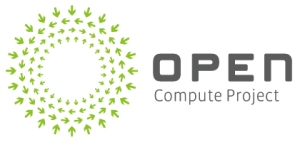 We posted yesterday about Glasgow’s Open Access IP strategy (adopted also by Kings and Bristol) and Stephen set down the challenge for someone to tell him he was wrong. Now, Stephen’s a respected colleague and friend and so I’m certainly not going to be so bold as to do that (not least because I actually believe that the points he makes are perfectly valid). I would, however, like to offer an alternative perspective on the Easy Access IP model.
We posted yesterday about Glasgow’s Open Access IP strategy (adopted also by Kings and Bristol) and Stephen set down the challenge for someone to tell him he was wrong. Now, Stephen’s a respected colleague and friend and so I’m certainly not going to be so bold as to do that (not least because I actually believe that the points he makes are perfectly valid). I would, however, like to offer an alternative perspective on the Easy Access IP model.
This is about Access, not Price
Much of the publicity and discussion around the Easy Access IP model has been around the fact that the IP is being ‘given away for free’. To my mind, this is a distraction from the principal aim of the scheme – namely that this is about increasing access to technology. Granting licences on a royalty free basis is not a goal in itself, it’s simply a way of achieving this broader aim.
Glasgow’s decision not to charge a royalty is therefore a strategic decision rather than an absolute requirement of the Open Access IP model itself. Whilst Glasgow could modify their licence terms to charge a nominal royalty fee, they have taken the view that doing so would make the technology less attractive to potential licenses and therefore hinder the dissemination of the IP. This is especially true if the royalty rate is a point for negotiation.
A cynic may argue that focussing the discussion on ‘giving IP away for free’ is a great publicity stunt. However, even if Glasgow had one eye on the publicity that this bold move might generate, there is no doubt that making the licensing process simple and commercially attractive, whilst also increasing exposure and awareness of the model, are all geared towards the ultimate objective of increasing access to, and dissemination of, Glasgow’s technology.
What are the benefits of the Easy Access IP model?
In my view, the real benefits of the Open Access IP model are threefold:
- The model recognises that University Tech Transfer is not principally concerned with making money – it is about disseminating research and engaging with industry;
- It forces Tech Transfer offices to make an early decision as to how to disseminate a particular technology; and
- It provides businesses with certainty as to licence terms and guarantees a quick and easy licensing process.
Tech Transfer is not about making money
 The role of a University Technology Transfer Office is complex and Business Development Managers within Tech Transfer offices operate in that uncertain space between industry and academia. The difficulty for a university is how to evaluate whether or not its Tech Transfer office is successful?
The role of a University Technology Transfer Office is complex and Business Development Managers within Tech Transfer offices operate in that uncertain space between industry and academia. The difficulty for a university is how to evaluate whether or not its Tech Transfer office is successful?
One very simple way to measure success is by the amount of revenue generated by a Tech Transfer office. Most Tech Transfer offices would argue, however, that this is a crude measurement and does not reflect the broader value that a Tech Transfer office brings to a University in terms of establishing links with industry. These links can then lead to collaborative opportunities and/or the sponsorship of research which, for many universities, is far more important than the receipt of royalty payments. Even from a purely financial perspective, the value of any such funding can often outweigh the amounts received through direct commercialisation activities.
The advantage of the Open Access IP model is that it recognises that commercial revenue generation is just one aspect of Tech Transfer. Accordingly, it is important that any evaluation of the success (or otherwise) of the Open Access IP model takes into account these additional, indirect benefits to the University.
Early decision making
The Open Access IP model assumes that there are 3 types of technology:
- There’s the stuff that has a clear application and/or route to market, even if it’s early stage. This is the stuff that (you hope) will be commercially valuable and should form part of your ‘commercial’ licensing portfolio.
- There’s the stuff that is exciting, but it has no identifiable application or only a very small market potential. This is the technology that forms part of your Open Access IP licensing portfolio.
- Finally, there’s the stuff that you know isn’t going to make it. This is the stuff that you drop. This is an important category as it recognises that Open Access IP is not to be used as a dumping ground for IP that has no value.
A typical Tech Transfer office will spend most of its time focussing on the first category of IP; and quite rightly so – this is the stuff that’s easier to work with and/or has the potential to bring in a sizeable revenue stream. There is a risk, however, that focussing on this first category means that technology in the second category simply sits on the shelf gathering dust until someone takes the decision to stop promoting and/or protecting it.
The Open Access IP model provides a quick and easy route for technology in this second category to be adopted by industry. It starts from the premise that it’s better for this technology to be ‘out there’ than for it to stagnate in a Tech Transfer office. The model therefore encourages Tech Transfer offices to make an early decision on their licensing strategy since the earlier they decide to move IP to their Open Access portfolio, the more time they will free up to concentrate on their commercial portfolio.
An obvious consequence of this model is that Tech Transfer offices must be given the scope to get some of these calls wrong. Assessing the potential value of IP is difficult at the best of times, but arguably becomes more difficult the earlier you try to make this assessment. However, if a University has recognised that Tech Transfer is about more than just making money, it should also recognise that not making a financial return from a particular piece of technology is not a failure of Tech Transfer.
Certainty of licence terms and quick and easy licensing
I agree with Stephen in that I don’t believe Universities are difficult to deal with. However, the problem is not that Universities are difficult to deal with; it is that they are perceived (by some people) to be difficult to deal. Whether or not this perception is fair or accurate is irrelevant.
The Open Access IP model counters this perception (to the extent that it exists) by offering an extremely short, non-negotiable licence agreement. Not only does this give industry certainty as to what terms it is going to be signing up to, it also reassures them that they are not going to get caught up in time consuming negotiations.
Will it Work?
Frankly, who knows? For my part, I have to say that I’m optimistic.
Although the models are very different, I can see a number of parallels between the ethos of Open Access IP and Open Source software movement. In particular, the focus on ‘giving IP away for free’ is reminiscent of early objections to the Open Source Software licensing model. As with Open Access IP, the fact that open source software is mostly made available without charge is simply a consequence of the broader aim of granting people ‘freedom of use’; it is not a goal of the Open Source licensing model itself.
IP Draughts will be watching with interest to see whether the early results from Glasgow, Kings and Bristol are positive. If they are, this blogger expects there to be a rush of other institutions looking to implement this model (or at least a flavour of it). On this point, I’d just like to add a word of caution (again drawn from the open source software sector): if and when this model becomes successful, the Tech Transfer sector will need to act swiftly to standardise the licence terms across institutions. The worst thing the Tech Transfer sector could do would be to try to sell ‘easy access IP’ to industry as a simple, quick and straightforward licensing model and then present hundreds of different variations on the same licence terms.






You must be logged in to post a comment.